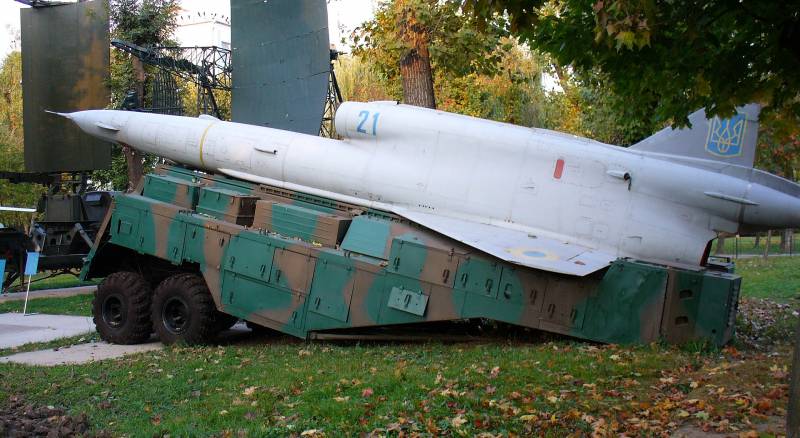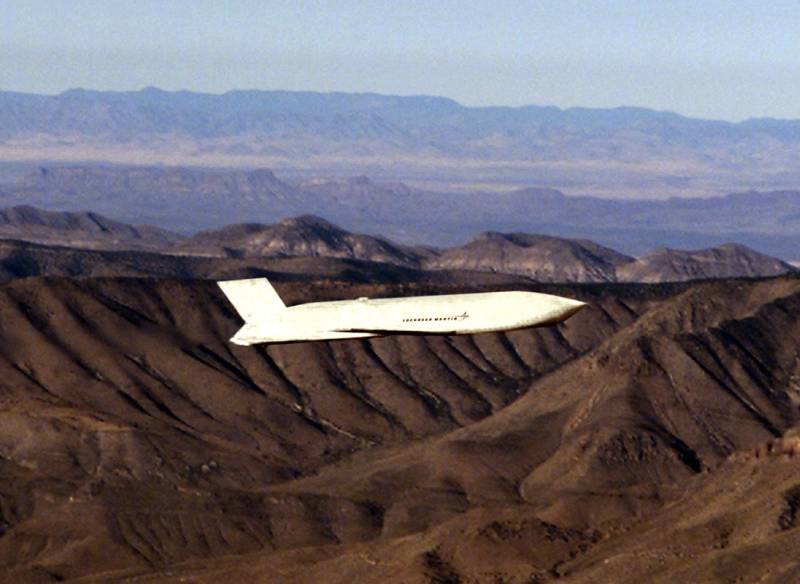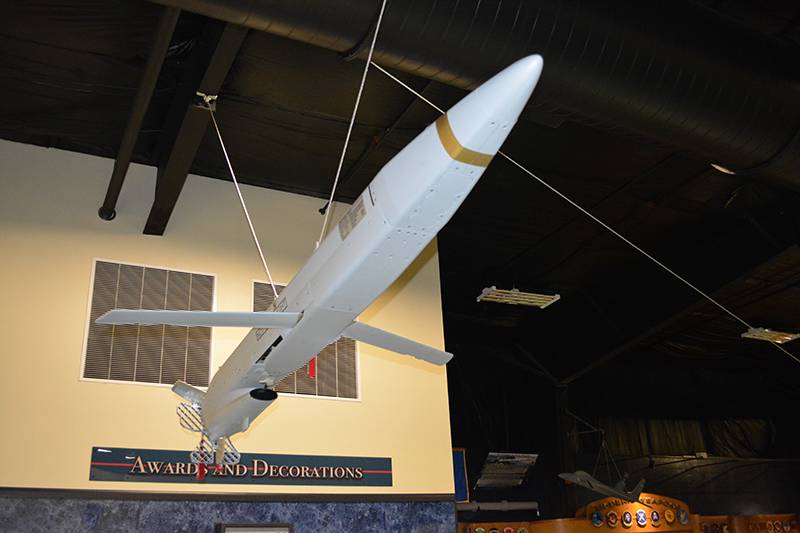Ukrainian UAV strikes on the airfield in Engels as an indicator of the extreme vulnerability of aviation at base points

The issue of vulnerability aviation at airfields has already been repeatedly raised by the author on the pages of the Military Review. For example, in the material Survival of military aviation on airfields under the influence of long-range precision weapons the conclusion was formulated that two advanced adversaries with high-tech armed forces would be able to destroy most of each other's combat aircraft on airfields at the very beginning of the conflict, even before they could fight in the air. The reasons why the armed forces of the Russian Federation (RF Armed Forces) could not fully solve this problem on the territory of Ukraine were also considered.
And so, we got an object lesson. Of course, we are talking about the attack by the Ukrainian Armed Forces (APU) on the strategic aviation airfield in the city of Engels using the modernized Soviet unmanned aerial vehicle (UAV) Tu-141 Strizh. The very fact of striking to a depth of 600 kilometers, and even against a strategic object, is simply discouraging, especially considering that this was done not by a hypersonic munition, not by an inconspicuous cruise missile (CR), but by an “ancient” UAV with a huge effective dispersion surface ( EPR).

Who would have thought that this junk could be effectively used against Russian strategic aviation? Image by wikipedia.org
Of course, it can be assumed that striking a Russian airfield at such a depth is an isolated case.
But while this material was in the process of being prepared, another blow was dealt to the airfield in Engels. According to the information from the RF Ministry of Defense, the enemy UAV was destroyed by means of air defense (air defense), however, three servicemen were killed. And a few days later, the air defense systems of the airfield in Engels destroyed another air attack weapon (AAS) ...
Or maybe the situation is justified by the fact that this has never happened before, and that no one expected this? But wait, how was this not expected?
We are having a full-fledged war with the active involvement of US and NATO structures, and the enemy does not hesitate to use any means. But what if the United States decided / decided in complete secrecy to provide the Armed Forces of Ukraine with several dozen low-observable JASSM-ER missiles with a firing range of about 1000 kilometers? So you can generally lose all strategic aviation.

It will be an order of magnitude more difficult to repel a KR JASSM strike. Image by wikipedia.org
But what if the escalation of the situation continues, and that the United States itself decides to strike at Russian aviation?
Yes, in order not to provoke an exchange of nuclear strikes, the United States will not strike at government facilities, critical infrastructure, strategic nuclear forces (SNF) - even the bombers in Engels will not be touched, but the rest of the aircraft will be subjected to a massive attack by means of air attack.
To understand the situation, let us once again consider what force the US Armed Forces can strike.
US military long-range precision weapons
It is unlikely that anyone has any doubts that the United States has significant capabilities to create and deploy high-precision weapons long range. More than two thousand units of JASSM air-launched missiles alone have been produced, of which half are JASSM-ERs with a flight range of about a thousand kilometers. Also in service with the US Armed Forces is about eight thousand sea-based Tomahawk cruise missiles. To deplete and break through the Russian air defense (air defense), the enemy will definitely use false targets ADM-160A / B MALD, capable of imitating the radar signature of various air defense systems.

ADM-160A MALD decoys can significantly complicate the operation of air defense systems. Image by wikipedia.org
As carriers of guided weapons, Riper UAVs, of which about three hundred are in service with the US Armed Forces, as well as other existing and promising UAVs, can be used. This arsenal will be replenished and expanded both at the expense of existing and advanced types of weapons, including land-based, sea-based and air-based hypersonic weapons.
Thus, there are more than 10 long-range air defense systems in service with the US Armed Forces, and potentially this figure could be several times higher.
Launchers of ground-based complexes of long-range precision weapons will be located as close as possible to Russian borders, and new types of carriers will be adapted for IOS, for example, transport aircraft equipped with parachute-dropped launchers. Surface ships and submarines of the US Navy will come closer and closer to the maritime borders of the Russian Federation.
Presentation of the Rapid Dragon program - the launch of tens to hundreds of cruise missiles from transport aircraft
A key characteristic affecting the ability of the US military to ensure the defeat of Russian aircraft at airfields is their advanced constellation of reconnaissance satellites, supplemented commercial structures providing Earth remote sensing services.
In the future, the US capabilities to destroy targets deep in enemy territory will be significantly expanded by retargeting long-range precision-guided munitions in flight. So far, this issue is at the initial stage of its resolution, but there is no doubt that it will be resolved positively - low-orbit satellite constellations will make it possible to implement this function even on tactical-level UAVs.
And this is just the beginning - we will consider the prospects for further building up the enemy’s potential for delivering strikes with long-range precision weapons in a separate article, but for now we will focus on today’s bottom.
How many targets - Russian combat aircraft and helicopters on airfields - must be destroyed by the US Armed Forces?
Russian Air Force (VVS)
According to open data, about 3000 units of aviation equipment are currently in service with the Russian Air Force, of which (data rounded):
- 1000 fighters, interceptors, front-line bombers and attack aircraft;
- 140 - strategic and long-range bombers;
- 300 military transport aircraft;
- 130 aircraft for the transport of personnel;
- 75 special aircraft - long-range radar weapons (DRLO), tanker aircraft and reconnaissance aircraft of various types;
- 250 training aircraft;
- 1000 helicopters of all types.
Even if we assume that the enemy attacks everything he can (except for strategic bombers), and half of the attacking ammunition will be destroyed by air defense systems (which is unlikely), then he will spend about half of his long-range HTO arsenal on destroying all (!) Aviation of the Russian Air Force . In addition, the open location of Russian aviation equipment at airfields "side by side" will allow one cruise missile with a warhead (warhead) weighing 500 kilograms to destroy two or three units of aviation equipment at once, which means that the United States will be able to "save".

The fleet of the most modern combat vehicles in the Russian Air Force is about five hundred aircraft. Image by wikipedia.org
With the simultaneous launch of all precision-guided munitions, one cannot rely only on air defense systems, they will simply be overloaded in terms of the number of guidance channels and will quickly exhaust their ammunition load, and when they are reloaded, it will be too late. In addition, knowing the location of air defense systems and using high-precision 3D surface maps, the enemy will plot the flight path of the air defense systems in such a way as to minimize the time they spend in the field of view of radar stations (RLS) and hit by anti-aircraft guided missiles (SAM).
They probably won't help here. over-the-horizon radar stations (ZGRLS) - using space means of electronic intelligence (RTR), the enemy can detect gaps in coverage areas or even create them artificially (so far this is from the field of assumptions, but the operation of the ZGRLS is based on the reflection of radio waves from the ionosphere), and who knows what results were obtained on the complex HARP ionospheric research.

ZGRLS "Container" and the principle of its operation (left), as well as the "ionosphere research complex" HARP (right). Image by wikipedia.org
However, without touching on "complex matters", RTR satellites can simply determine when the next ZGRLS will be on preventive maintenance and will be turned off, and hit into the resulting gap.
Minimization of consequences
In another article on the topic - Cover, Evade, Defend: Ensuring the Survival of Combat Aviation on Airfields Under the Influence of Precision Weapons Measures were considered to reduce the losses of their aircraft at home airfields in the event of a massive strike by the enemy with high-precision weapons.
One of the most important measures considered is the construction of shelters for aircraft of all classes. We can say that the end of 2022 clearly confirmed the highest priority of work in this direction.
After all, what's the problem? Russia is rebuilding cities to replace those destroyed by the war in Ukraine, building huge bridges, Olympic facilities and stadiums, tens to hundreds of kilometers of barrier lines with concrete structures with an unknown degree of usefulness, but cannot build several thousand arched shelters and prefabricated hangars?
Arched shelters for combat aircraft and helicopters are a long-term investment in the safety of the most sophisticated high-tech aviation equipment. Generations and types of aircraft will change, but protected shelters for them, with proper care, can last for decades, or even centuries. Moreover, the use of modern construction methods leads to a decrease in the cost of objects under construction, while the cost of aviation equipment only grows from generation to generation and will certainly continue to grow in the future.
If we talk about transport and strategic aviation, that is, about large aircraft, for which it will be difficult to build concrete shelters, then even pre-fabricated hangars will play their role, especially since they can and should be built in excess, shuffling aircraft and, for example, , airfield equipment. The enemy will have to spend much more time on reconnaissance and use much more long-range AOS, since instead of the strategic bomber chosen as the target, there may well be only snowplows in the hangar.

Arched shelters and prefabricated hangars can significantly reduce the loss of aircraft and helicopters at home airfields or even force the enemy to abandon such a strike due to its potentially low effectiveness.
Conclusions
It was necessary to cover all Russian combat and auxiliary aviation already yesterday, but since this was not done earlier, it is necessary to accept the strike of Ukrainian UAVs on the airfield in Engels as a "sign from above." The production capabilities of the Russian Federation make it possible in 2023 to provide shelters for all modern military equipment - about 1000 vehicles, and then, in 2024-2025, to drive into hangars and all other aircraft and helicopters available in the Russian Air Force.
This will reduce the likelihood and effectiveness of both single sabotage strikes by the Armed Forces of Ukraine and the massive use of long-range air attack by the United States. An additional advantage will be an increase in the efficiency of storage and maintenance of modern military equipment, and as a result, a decrease in the likelihood of non-combat losses due to emergencies.
Information